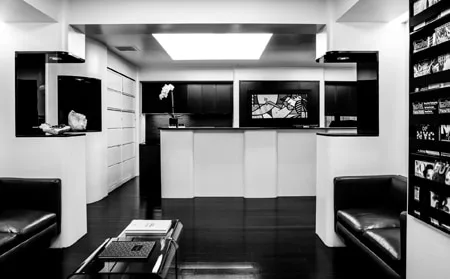The popularity of butt augmentation has soared in recent years with celebrity social media photos making a bigger, curvy derriere a much-sought-after attribute among women. Today, there are two options to choose from: butt enhancement using implants and the Brazilian butt lift (BBL). Performed by specially trained and skilled plastic surgeons, Brazilian butt lift in NYC is a minimally invasive procedure that involves using the patient’s own fat to provide natural-looking results with minimal side effects and recovery time. Though BBL has gained wide acceptance, prospective patients have many concerns about the procedure. One question that patients asked surgeons on RealSelf relates to how much fat would be needed for the augmentation and how to help the fat survive.
Table of Contents

Can You Maximize Fat Survival in a Brazilian butt lift in NYC?
This procedure involves liposuction to extract fat from one area of the patient’s body and injecting purified fat cells into the buttocks to provide the desired results. According to expert plastic surgeons, the volume of fat needed would depend on your size and your desired goal as determined by the amount of fat you have to “donate”. This means that you should have enough fat and an appropriate body type to be able to harvest enough fat, and 0pto make an effective change to the buttocks during transfer. Techniques have really evolved during the last several years and now even small patients who are slim may still have enough fat in certain places to achieve effective BBL results.
Typical fat donor sites include the arm pit, the mid back or bra rolls, flanks or love handles, the outer thighs, inner thighs, and abdomen. According to Dr. Christopher Chia of bodySCULPT in NYC, an important element of BBL is the reshaping of the “precycle area” – small of the back area just under the curvature of the top of the buttocks. Removing unwanted fat from this region would really reduce waist size and enhance the projection of the buttocks even before the fat is injected.
To meet their aesthetic goals, patients should discuss the question of how much fat would be needed for their augmentation with their plastic surgeon in an in-person consultation beforehand. In general, Brazilian butt surgery requires a good amount of fat in the order of several hundred CCs or even more per buttock, says Dr. Chia.
The survivability of the fat cells is another concern. While a skilled surgeon will carefully extract and transfer the fat to the buttocks, not all of this fat will survive. As a result, the surgeon may opt to overfill the buttocks with fat by a certain percentage, another matter that patients should discuss at the consultation. Overfilling of the buttocks with fat combined with the post-operative swelling will make the shape and volume of the buttocks to appear quite enhanced in the early post-op phase. To maximize the survivability of the graft, patients should minimize the amount of pressure or sitting or time in the early several weeks postop. Once the fat cells develop and mature weeks to months, the fat will last several years or longer.
On RealSelf, one expert surgeon advises not putting pressure on the fat graft for a period of 3 weeks. For the fat graft to survive, the blood supply must reach the fat graft before it runs out of nutrients and the blood vessels must get incorporated into the graft successfully. The fat graft, blood supply, and surrounding tissues must be knit together successfully by the extracellular matrix. The final results of BBL are seen approximately 6 months after the treatment. Maintaining a healthy lifestyle is also important for long-lasting results.
Quick Ways to Improve Fat Survival after Brazilian Butt Lift
- Wear the prescribed compression garment
- Eat healthy
- Avoid driving
- Do not sit directly on your buttocks
- Do not smoke
- Exercise properly
- Drink plenty of fluids
- Maintain a stable weight
How to Improve Fat Survival after a Brazilian Butt lift
No matter how carefully the surgeons perform the procedure and how advanced the techniques are for fat transfer, not all of the fat transferred will survive. Only a portion of the fat graft will survive in its new location. The proportion of fat cells that survive would depend on various factors such as the total volume of fat transferred, the tightness and elasticity of skin in new site, and how you care for yourself during the recovery process. Fortunately, there are several things that you can do following Brazilian butt lift surgery to maximize the survivability of the fat graft:
- Wear the prescribed compression garment: After the procedure, your surgeon will most likely advise you to wear a support garment around-the-clock. You will be given instructions on how long you need to wear the garment and about wearing any other garments during your recovery. It’s important not to wear tight or restrictive clothing during your healing process as it will squeeze and destroy the newly transferred fat. One option is to use a compression garment with the rear end cut out so that the garment will not kill the fat grafts before they have a chance solidify (www.plasticsurgery.org).
- Eat healthy: Your body needs extra calories to supply blood to new fat cells and to recover from the surgery. Eat nutrient-dense foods toed provide your body with all the vitamins and minerals it needs to support its recovery. In addition, adding more healthy fats to your diet may be beneficial during your recovery.
- Avoid driving: You need to take at least 2 weeks off from driving after BBL. The reason is sitting on your newly transferred fat will squish the fat cells.
- Do not sit directly on your buttocks: You should avoid sitting directly on your buttocks and minimize sitting time for at least eight weeks (or more) after the procedure. In fact, this is one of the most important recovery tips for BBL. When you want to sit, use a donut pillow or inflatable pillow. To avoid putting pressure on the fat graft, place the pillow behind your legs. You will be also instructed to sleep on your stomach or sides for the first eight weeks after your surgery.
- Do not smoke: You should avoid smoking after BBL, as smoking affects the flow of oxygen and nutrients through the blood stream, which in turn, impacts 0your body’s ability to heal. After the fat transfer procedure, the newly transferred blood cells need to re-establish blood supply in order to survive. Smoking makes it harder for the body to build new blood vessels and affects the quality of blood which the fat cells receive their recovery.
- Exercise: Avoid high impact activities, especially any type of bouncing immediately after surgery. Light activities such as fast-paced walking can be performed after one month. Most patients return to normal activities six to eight weeks after the surgery. More strenuous activities can be performed after the fat cells have stabilized.
- Drink plenty of fluids: In addition to drinking, you need to provide your body with electrolytes, the salts and minerals to keep it hydrated.
- Maintain a stable weight: Once you have healed and the fat cells are established, the shape of your butt will be permanent and the fat cells will work like any other fat cells in the body. ) If you gain weight, the areas that underwent liposuction will be the last to accumulate fat. Staying at a healthy weight is the best way to maintain BBL results.
Are you worried about swelling after BBL? Don’t worry. Read our blog post to learn more,
How Long Does Swelling Last after BBL?
Maximize fat survival and enhance your contours for long-lasting results with BBL.
Call us at 1-800-282-7285 to schedule your consultation.
If you are considering Brazilian butt lift in NYC, consult a plastic surgeon in an AAAASF-accredited practice who is experienced in performing the procedure under both general anesthesia and local anesthesia. This is very important for your safety and to achieve optimal outcomes. Following your surgeon’s post-op instructions will promote smooth recovery.
